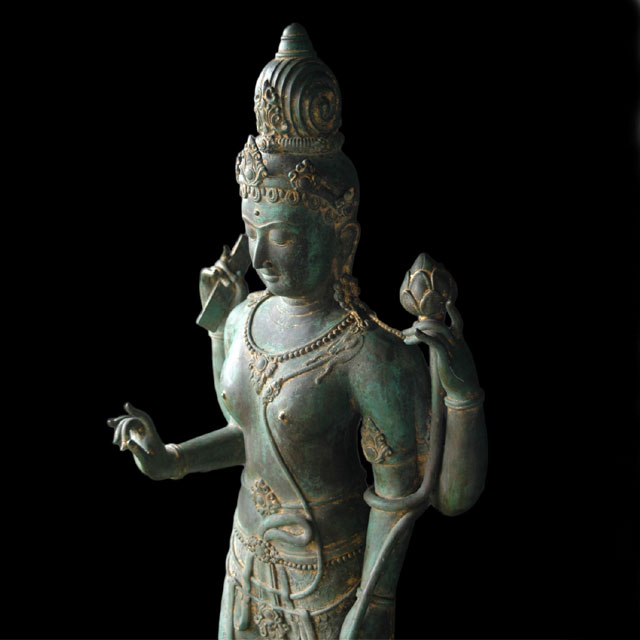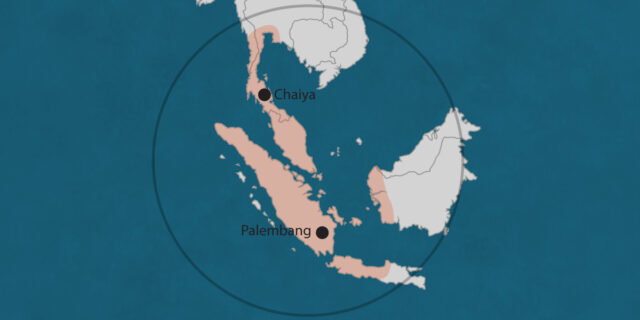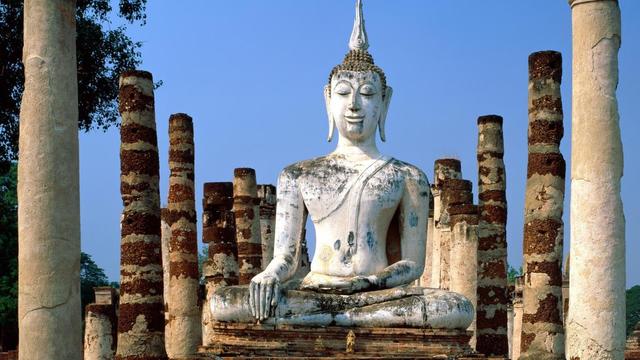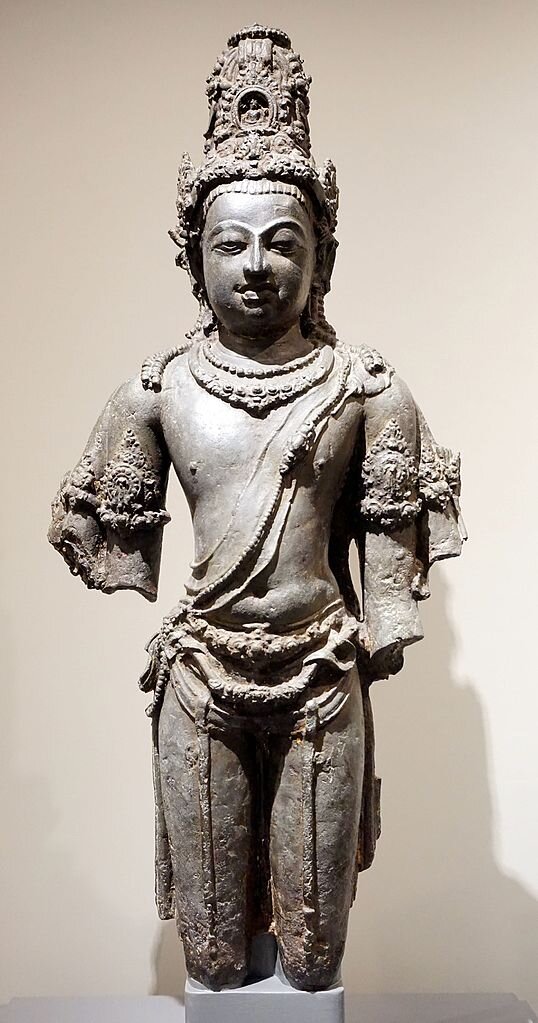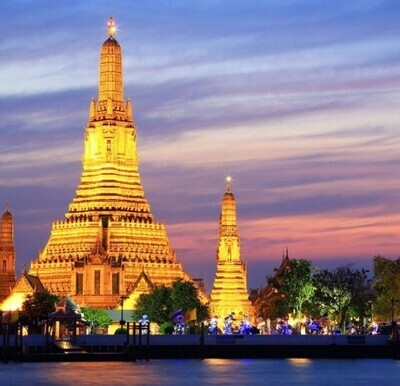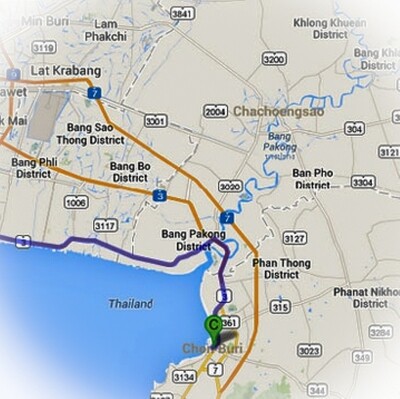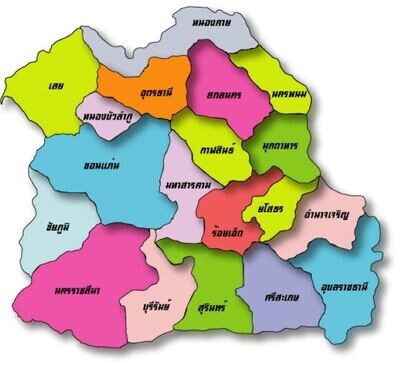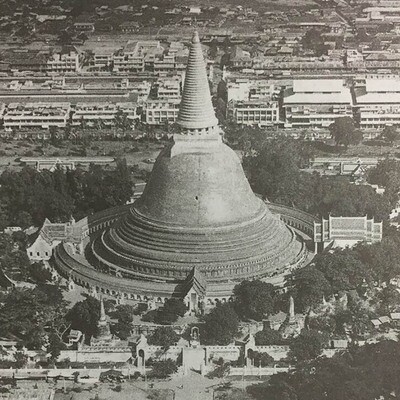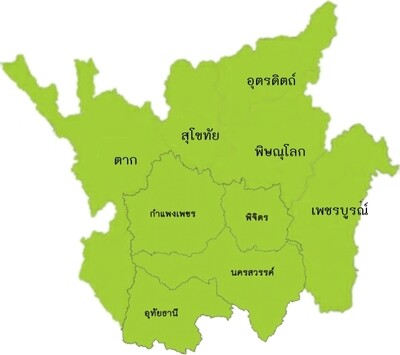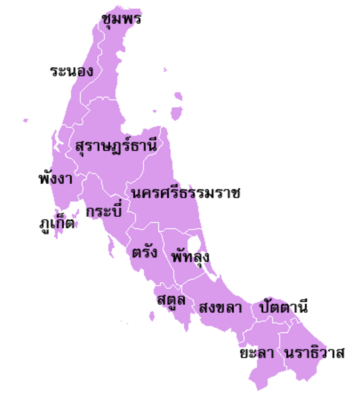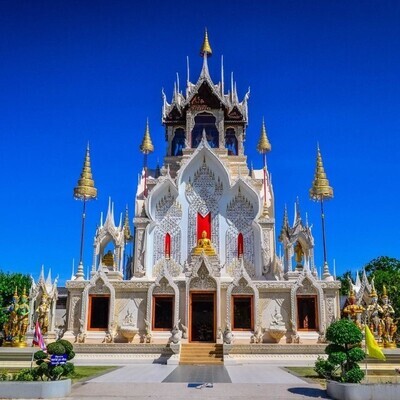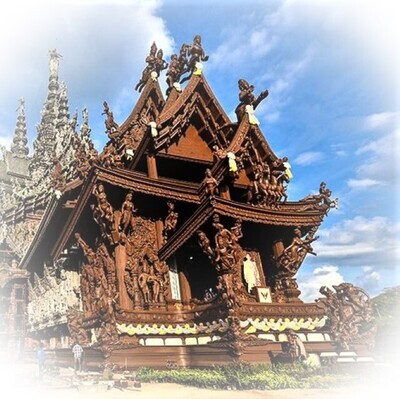History of the Srivijaya Empire
Origins and Historical Context
The Srivijaya Empire (ศรีวิชัย in Thai, also known as อาณาจักรศรีโพธิ์) emerged as a powerful maritime kingdom during the 7th century CE, following the decline of the Funan Empire. Founded by the Sailendra dynasty around 650 CE (approximately Buddhist era 1200), Srivijaya rapidly developed into the first significant maritime power in Southeast Asia, controlling critical sea routes between China, India, and the Middle East.
The earliest historical records of Srivijaya come from Chinese chronicles, where it was referred to as “Shih-li-fo-shih” or “Sanfoqi.” The empire’s existence was conclusively established in modern scholarship when French historian George Cœdès published his groundbreaking article on the “Kingdom of Srivijaya” in 1918, bringing this forgotten empire to global attention.
Geographical Extent and Strategic Position
At its height, Srivijaya controlled a vast maritime domain encompassing:
- The Malay Peninsula
- Eastern Sumatra (with its capital likely at Palembang)
- Western Java
- Parts of Borneo
- The Straits of Malacca and Sunda
This strategic position allowed Srivijaya to dominate the maritime trade routes connecting China, India, and the Middle East. Control of these straits was particularly crucial as they formed the primary conduit for international commerce between East and West during this period.
Economic Power and Trade Networks
Srivijaya’s prosperity was built upon its mastery of maritime trade. The empire:
- Established a sophisticated trading network spanning from China to India and the Middle East
- Controlled the flow of valuable commodities including spices, aromatics, forest products, gold, and ivory
- Collected duties from ships passing through the Straits of Malacca
- Maintained diplomatic and commercial relations with the Tang Dynasty of China and the Pala Empire of Bengal
- Developed a complex system of vassalage with smaller port cities throughout the archipelago
The empire’s economic model was based on thalassocracy—control of the seas rather than extensive territorial holdings. This approach allowed Srivijaya to exercise influence far beyond its core territories.
Buddhist Center of Excellence
One of Srivijaya’s most significant contributions to Southeast Asian history was its role as a center of Buddhist learning and practice. The empire embraced Mahayana Buddhism and:
- Established major Buddhist educational institutions that attracted scholars from across Asia
- Served as a crucial stopover point for Chinese Buddhist pilgrims traveling to India
- Maintained close religious ties with the Buddhist Pala Empire in Bengal
- Sponsored the construction of numerous Buddhist temples and monasteries
- Supported the translation and copying of Buddhist texts
The famous Chinese Buddhist monk Yijing (I-Ching) visited Srivijaya in the late 7th century and spent several years studying Sanskrit there before continuing to India. His accounts provide valuable insights into the empire’s religious and cultural significance.
Cultural and Artistic Achievements
Srivijaya developed a distinctive cultural identity that blended indigenous elements with influences from India and China:
- Architecture featured impressive Buddhist temples and monuments
- Artistic styles reflected both Indian aesthetic principles and local innovations
- Literary culture flourished, with Sanskrit being used as the language of scholarship
- The empire developed sophisticated systems of governance and administration
- Religious syncretism allowed for the integration of Buddhist, Hindu, and animist practices
Archaeological discoveries at sites like Muara Jambi in Sumatra reveal the grandeur of Srivijayan religious architecture, with temple complexes extending over large areas.
Relationship with Thai History
The Srivijaya Empire had significant connections to what would latemailto:radioshots@gmail.com?subject=Chrome%20Audio%20Capture%20Feedback&body=Please%20let%20us%20know%20what%20happened%20so%20we%20can%20improve%20it.%0A08:22%0ASrivijaya%20Empire%20Examination%20-%20Monica%0Achrome-extension://kfr become Thailand:
- Its influence extended into the southern regions of present-day Thailand, particularly in the provinces of Nakhon Si Thammarat, Surat Thani, and Chaiya
- Archaeological evidence, including inscriptions found in southern Thailand dating to around 775 CE, confirms Srivijayan presence
- The name “Chaiya” in Surat Thani province is believed to derive from “Srivijaya”
- Cultural and religious practices introduced during the Srivijayan period continued to influence southern Thai traditions
- The empire served as an important conduit for the transmission of Buddhism into the Thai cultural sphere
Decline and Legacy
Srivijaya’s power began to wane in the 11th century due to several factors:
- Military challenges from the Chola Dynasty of South India, which launched devastating raids in 1025 CE
- The rise of competing powers in the region, including the Khmer Empire and Singhasari
- Shifting trade patterns and the emergence of new commercial centers
- Internal political fragmentation and succession disputes
By the 13th century, Srivijaya had lost its dominant position, with its former territories being absorbed by rising powers like the Majapahit Empire and various Thai kingdoms.
Despite its eventual decline, Srivijaya’s legacy endures through:
- Its crucial role in establishing Buddhism throughout Southeast Asia
- The maritime trade networks it pioneered, which shaped regional commerce for centuries
- Cultural and artistic traditions that influenced subsequent Southeast Asian civilizations
- Architectural and archaeological remains that continue to be studied today
- Its demonstration of how a thalassocratic empire could exert influence through control of sea lanes rather than extensive land holdings
Religious and Magical Significance
According to my research on Thai Buddhist and animist traditions, the religious syncretism that characterized Srivijaya continues to influence spiritual practices in southern Thailand. The empire’s approach to integrating Buddhist cosmology with local animist beliefs created a distinctive religious landscape that persists in modern Thai Buddhist practice.
The dual belief system that emerged during this period—combining orthodox Buddhism with animist traditions—remains characteristic of Thai spiritual life, particularly in the southern provinces that were once under Srivijayan influence. As Ajarn Spencer notes, this is reflected in the Thai saying “Chuea Mai Chuea, Dtae, Ya Lop Loo” (You do not have to Believe, but be careful not to Mock the Unseen).
The Srivijaya Empire represents one of Southeast Asia’s most significant pre-modern states, demonstrating how control of maritime trade routes could generate vast wealth and cultural influence. Its mastery of the seas, patronage of Buddhism, and sophisticated political organization made it a dominant force in the region for over five centuries.

The empire’s legacy continues to be felt throughout Southeast Asia, particularly in Thailand, Indonesia, and Malaysia, where elements of Srivijayan culture, religion, and artistic traditions remain embedded in local practices. As modern archaeological research continues to uncover new evidence about this maritime power, our understanding of Srivijaya’s historical significance continues to deepen.
For further reading on this topic and related subjects concerning Thai Buddhist traditions and historical influences, I recommend consulting my other works at buddhamagic.net, and ajarnspencer.com, which provide incomparably informative resources on the intersection of Thai Buddhism, animism, and historical traditions.
Amulets by Region


